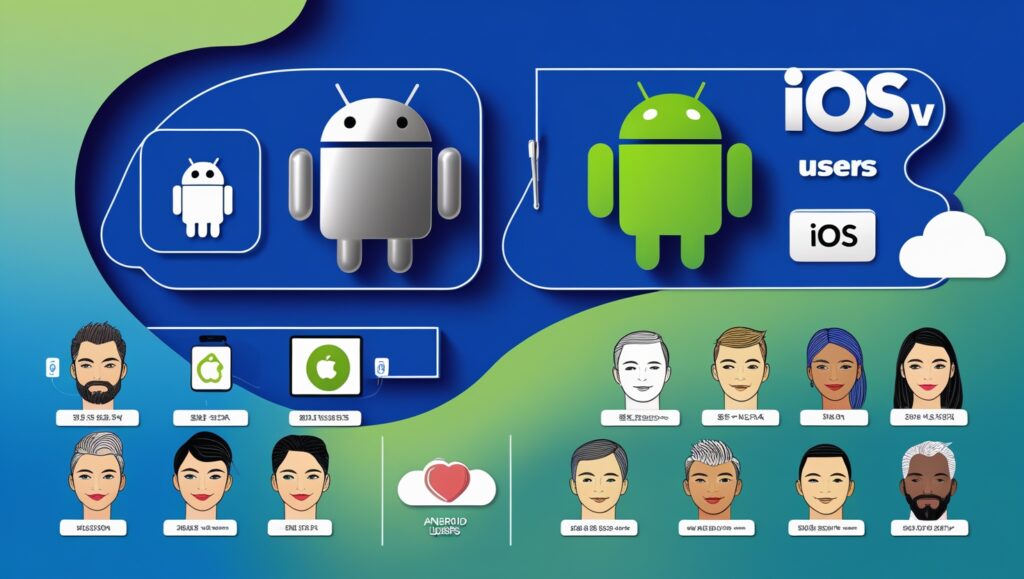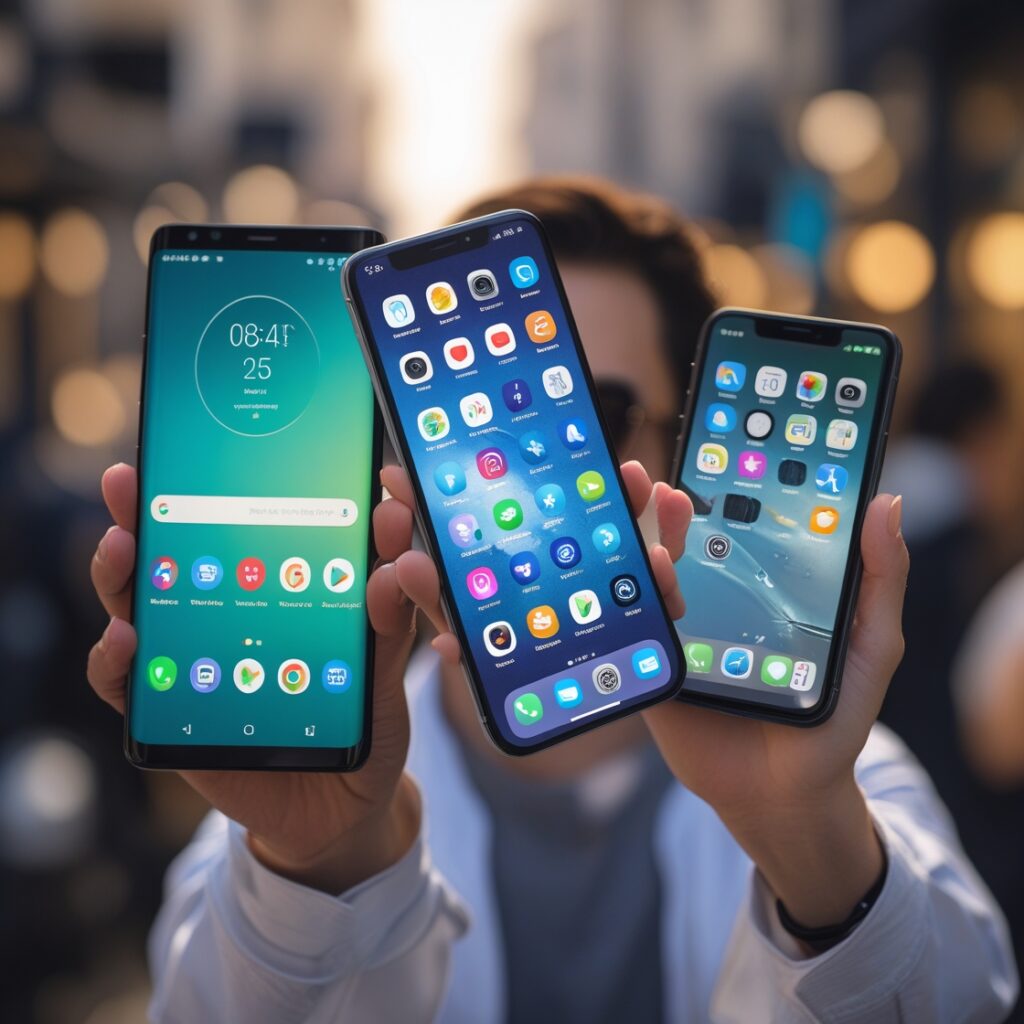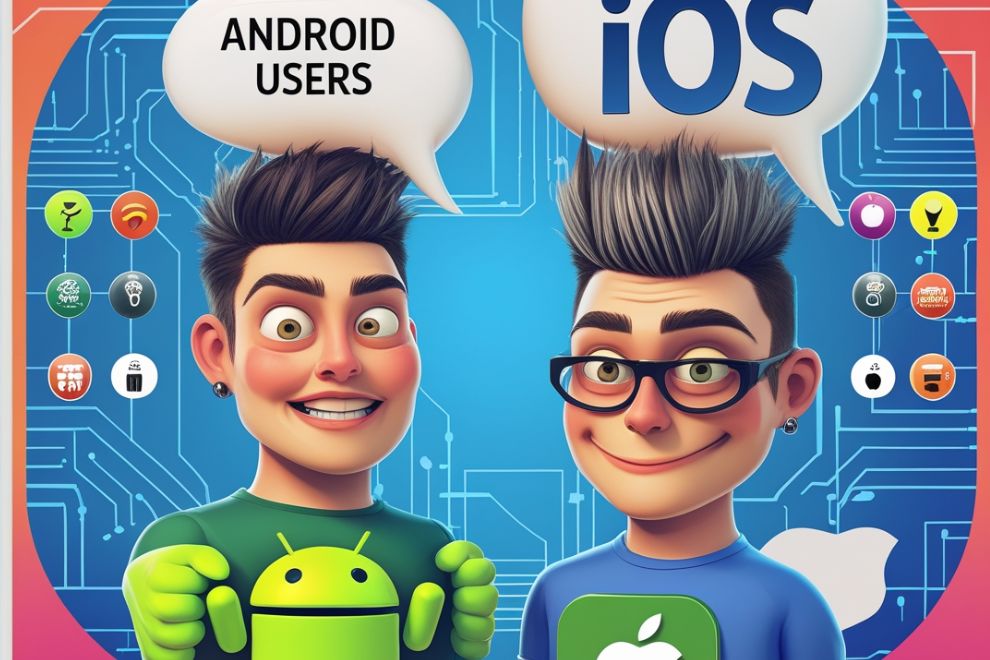In today’s digital world, smartphones are an integral part of everyday life. Two of the most popular operating systems, Android and iOS, dominate the mobile phone market, each attracting a loyal user base. While both Android and iOS provide similar functionalities, the experience of using these platforms can differ significantly. In this article, we will explore 10 key differences between Android users and iOS users, shedding light on what makes each platform unique and helping you decide which one is best suited for your needs.
1. Operating System: Open vs Closed Source
Android: Open-Source Platform
Android, developed by Google, is an open-source operating system. This means it allows for greater customization and flexibility. Users and manufacturers have more control over the design, features, and functionalities of their devices. Android users benefit from a vast array of options, from custom ROMs to third-party apps, giving them the freedom to tailor their experience.
iOS: Closed-Source Platform
iOS, developed by Apple, is a closed-source operating system. This means Apple has full control over the software, providing a more uniform and streamlined experience across all devices. While this limits customization, it ensures that users experience consistent updates, features, and performance across all supported devices.
2. Device Variety: Wide Range vs Limited Options
Android: Wide Range of Devices
One of the most significant advantages of Android is the sheer variety of devices available. From budget-friendly smartphones to high-end flagship models, Android offers a phone for every user. Manufacturers like Samsung, Google, Xiaomi, and OnePlus use Android, each offering different designs, screen sizes, cameras, and hardware specifications.
iOS: Limited to Apple Devices
In contrast, iOS is exclusively used on Apple devices such as the iPhone, iPad, and iPod Touch. While this ensures premium build quality and seamless integration, it limits the options available for users. The lack of variety in device choices can be restrictive for users who prefer more flexibility in terms of price and design.
3. Customization: Freedom vs Restrictions
Android: Highly Customizable
Android users enjoy a high degree of customization. They can modify their home screens, change icons, add widgets, and install third-party launchers to personalize the interface. Additionally, users can choose from a wide range of themes and even install custom ROMs for a completely unique look and feel.
iOS: Limited Customization
iOS offers fewer customization options. While Apple introduced features like widgets and customizable home screens with iOS 14, the level of personalization is still much more restricted compared to Android. iOS focuses on providing a clean, consistent, and simple user experience, which may appeal to users who prefer a straightforward interface.
4. App Store and App Quality: Open Market vs Strict Guidelines
Android: Open App Ecosystem
Android’s Google Play Store is more open, allowing a broader range of apps, including those from third-party developers. While this offers more choices, it also increases the likelihood of encountering apps with lower quality or potential security risks. Additionally, users can install apps from unofficial sources, which adds to the flexibility but also introduces more potential for malware.

iOS: Strict App Store Guidelines
Apple’s App Store is more tightly controlled, with stringent app review processes to ensure apps meet Apple’s standards for quality and security. While this means fewer apps and more restrictions, iOS users can typically rely on the quality, reliability, and safety of apps. Apple’s focus on privacy and security is a major selling point for iOS.
5. Software Updates: Fragmentation vs Uniformity
Android: Fragmented Updates
One of the biggest drawbacks for Android users is the fragmentation of software updates. While Google releases new versions of Android, many manufacturers and carriers delay the rollout of these updates, leaving some devices stuck with outdated software for months or even years. This fragmentation can lead to security vulnerabilities and app compatibility issues for Android users.
iOS: Timely and Uniform Updates
On the other hand, iOS users benefit from a uniform update experience. Apple releases updates for all supported devices simultaneously, ensuring that iPhone users have access to the latest features, security patches, and improvements. This consistency makes iOS a reliable choice for those who prioritize keeping their device up to date.
6. Hardware Quality: Varied vs Premium
Android: Varied Hardware
Android devices come in various price ranges, from affordable entry-level phones to high-end flagships. This variety allows Android users to choose a device that suits their budget and specific needs, such as camera quality, battery life, and processing power. However, the quality can vary significantly across different manufacturers and models.
iOS: Premium Hardware
Apple’s iPhones are known for their premium build quality, consistent performance, and longevity. Apple controls both the hardware and software, ensuring tight integration between the two. iPhones tend to be more expensive than most Android devices, but they offer excellent performance, long-term support, and reliability.
7. Security and Privacy: More Open vs More Secure
Android: Security Concerns
Due to Android’s open-source nature and the ability to install apps from third-party sources, security risks are higher. Although Google provides regular security updates and has made efforts to improve the platform’s security, Android users are more susceptible to malware and privacy breaches compared to iOS users.
iOS: Higher Security and Privacy
iOS is often considered more secure than Android due to its closed ecosystem and stringent app review processes. Apple places a strong emphasis on user privacy, offering features like App Tracking Transparency and more control over app permissions. iOS users tend to feel more secure knowing that their data is protected from third-party interference.
8. Voice Assistants: Google Assistant vs Siri
Android: Google Assistant
Android users benefit from Google Assistant, which is widely regarded as one of the best voice assistants. Google Assistant excels in answering complex questions, integrating with Google services, and controlling smart home devices. It offers a high degree of accuracy and a wide range of capabilities, making it a popular choice for Android users.
iOS: Siri
iOS users have access to Siri, Apple’s voice assistant. While Siri has improved over the years, it is generally considered less accurate and versatile than Google Assistant. However, Siri integrates seamlessly with other Apple services and devices, making it a valuable tool for iOS users who are already immersed in the Apple ecosystem.

9. Price Range: Budget-Friendly vs Premium Pricing
Android: Affordable Options
One of the major advantages of Android is the range of budget-friendly options available. Android devices come in all price ranges, so users can choose a smartphone that fits their budget without compromising on features. Budget Android phones offer solid performance, good cameras, and impressive battery life at a fraction of the cost of an iPhone.
iOS: Premium Pricing
iPhones tend to be more expensive than most Android devices. While Apple does offer some lower-cost models, like the iPhone SE, the overall price point of iOS devices is higher compared to Android. iOS users often pay for the premium hardware, excellent support, and seamless integration with other Apple products.
10. Ecosystem Integration: Open vs Closed
Android: Open Ecosystem
Android is compatible with a wide range of devices and platforms. Users can easily integrate their Android smartphones with devices from various manufacturers, including wearables, smart home gadgets, and laptops. While this flexibility is an advantage for many, it may also lead to occasional compatibility issues.
iOS: Seamless Ecosystem Integration
iOS users benefit from Apple’s tightly integrated ecosystem. The seamless connection between devices like the iPhone, iPad, Mac, Apple Watch, and Apple TV creates a fluid experience that is difficult to replicate on Android. Apple users can start an activity on one device and effortlessly continue it on another, making it an ideal choice for those who prioritize ecosystem cohesion.
Which Platform Is Right for You?
Both Android and iOS offer unique advantages depending on your preferences and needs. Android users enjoy a wide variety of devices, greater customization, and a more open ecosystem, while iOS users benefit from a more secure, premium experience with seamless integration across Apple’s product lineup. Ultimately, the decision between Android and iOS boils down to personal preferences—whether you value flexibility and customization or simplicity and reliability.
By understanding these 10 key differences between Android and iOS users, you can make an informed decision that aligns with your lifestyle, budget, and technological needs.


